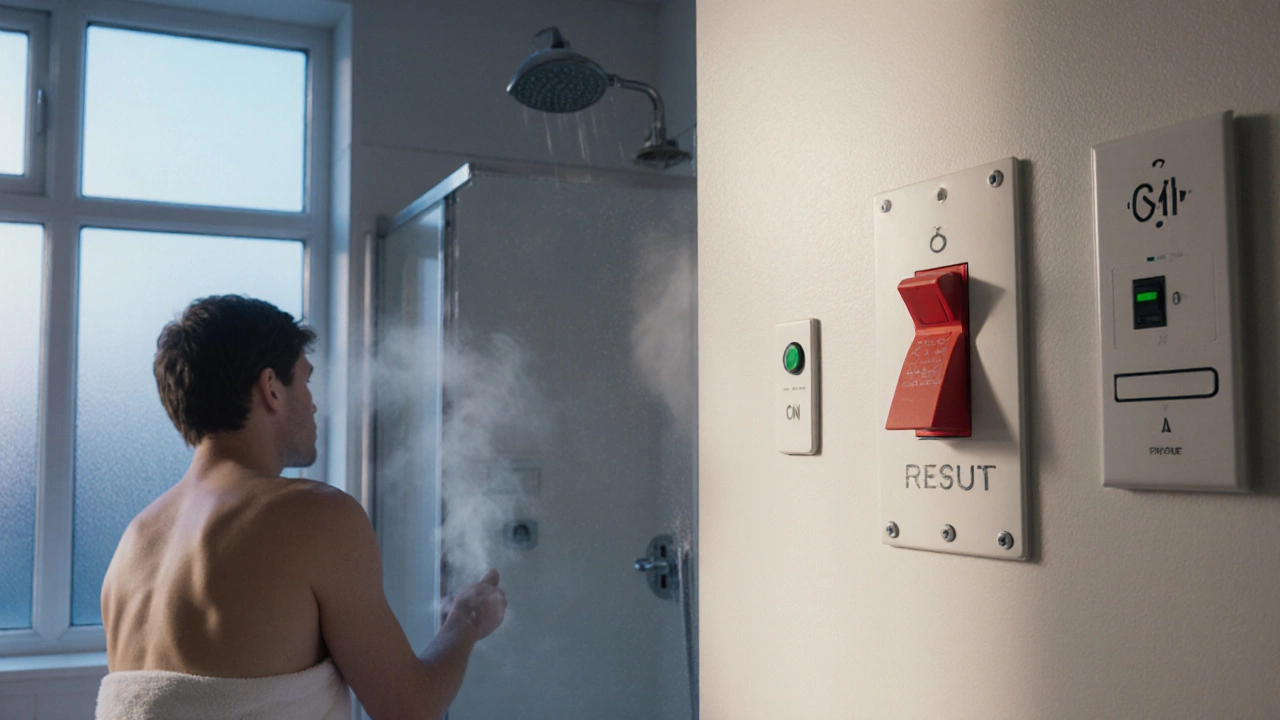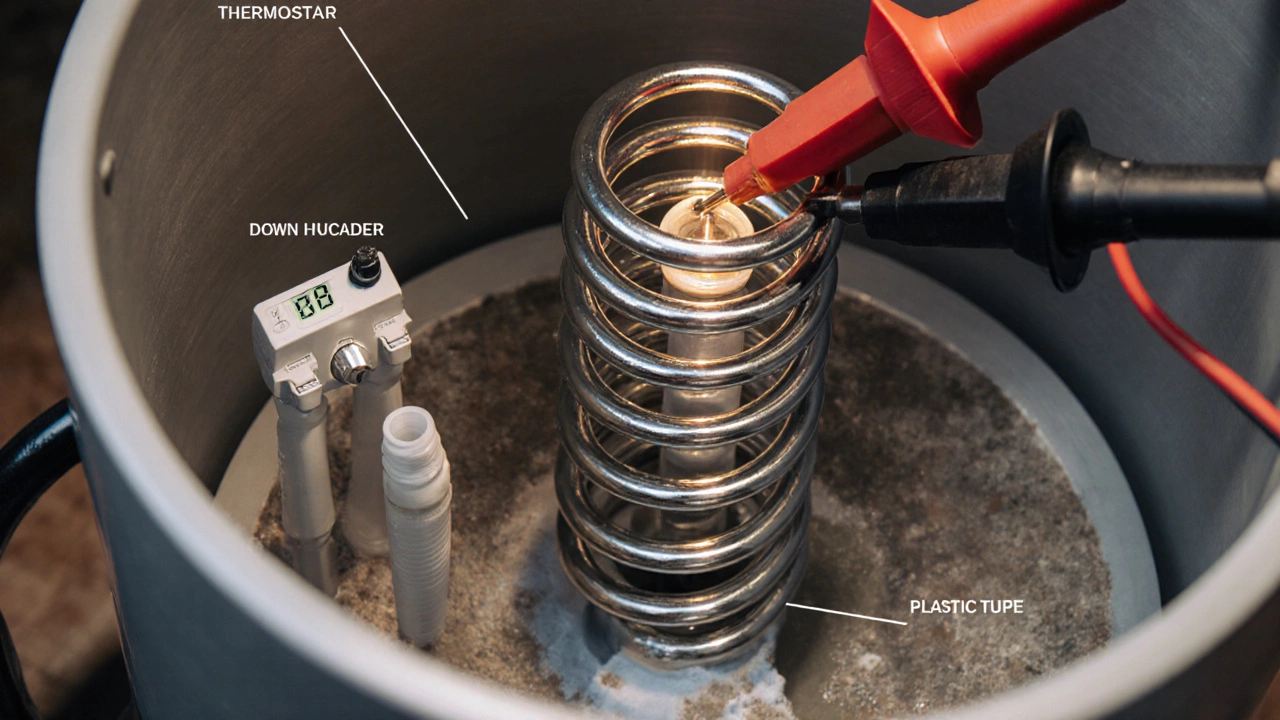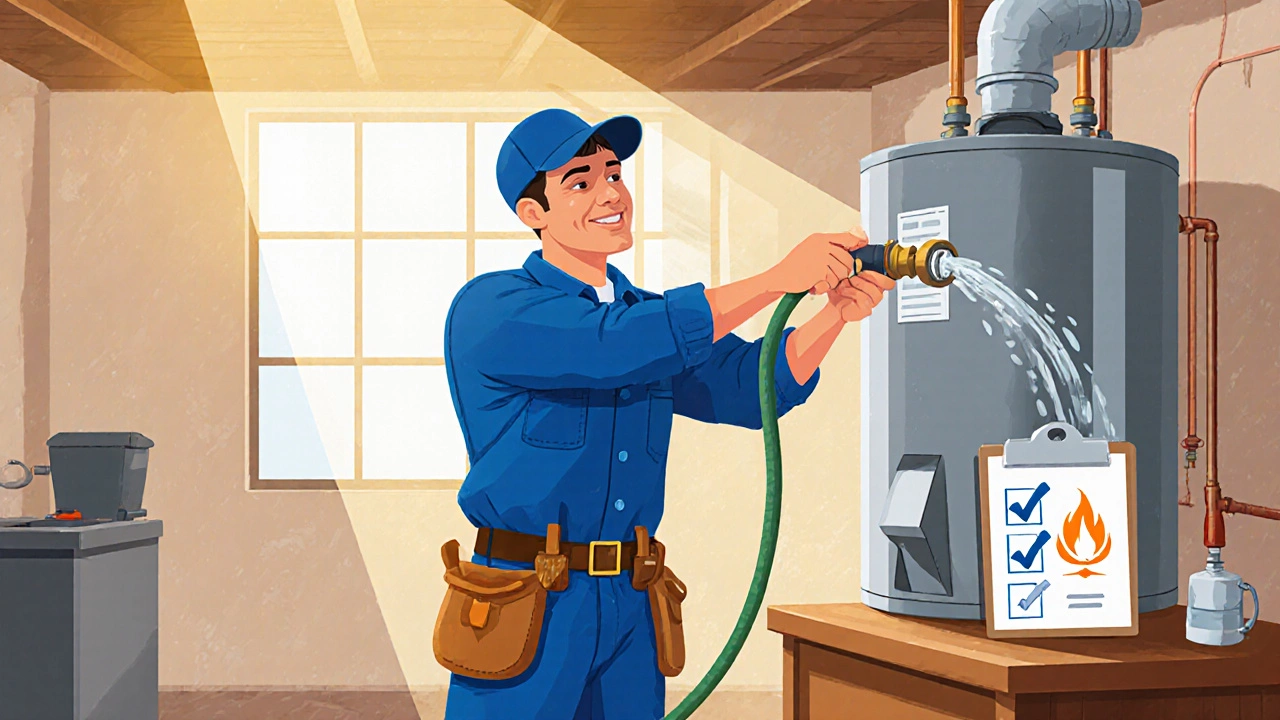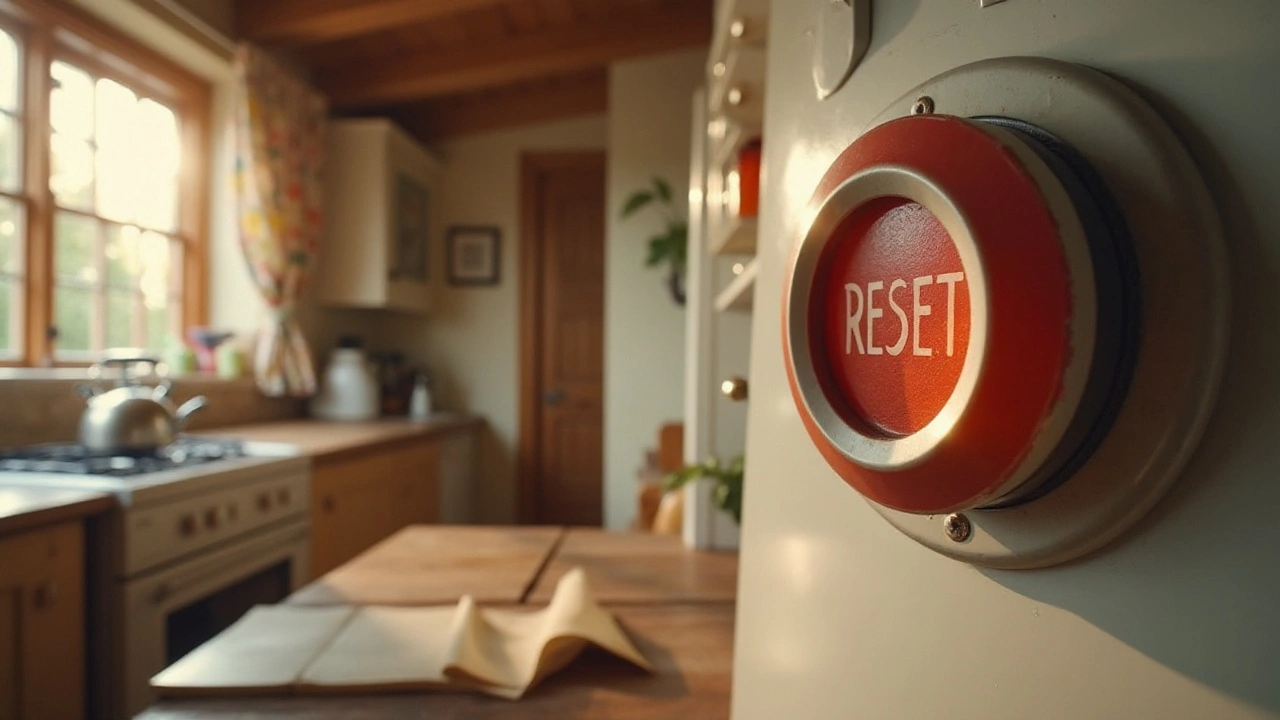
- 21 Oct 2025
- Gideon Thornton
- 0
Waking up to a no hot water shower is the worst way to start the day. Before you call a plumber and panic, let’s walk through the most common reasons why the water’s cold and what you can do yourself.
Quick Takeaways
- Check the water heater’s power or gas supply first - it’s the easiest fix.
- Inspect the thermostat and heating element for signs of failure.
- Clear any sediment or debris that might be blocking the dip tube.
- Verify that the shower mixing valve isn’t stuck in a cold‑water position.
- If these steps don’t help, it’s time to call a qualified technician.
Understanding how a Water Heater is a household appliance that heats and stores water for domestic use, typically using electricity, natural gas, or oil works makes troubleshooting a lot less intimidating. Most modern units have three core components: a heat source (burner or element), a thermostat that tells the heater when to turn on, and a storage tank that keeps water hot until you need it.
Identify the Root Cause
Cold water in the shower can stem from three broad areas:
- Power or fuel issues - the heater simply isn’t getting the energy it needs.
- Component failure - the thermostat, Heating Element is the electric coil that converts electricity into heat inside the tank, or gas valve may be malfunctioning.
- Plumbing blockages - a clogged dip tube, sediment buildup, or a faulty shower mixing valve can prevent hot water from reaching the tap.
By narrowing the category first, you’ll save time and avoid unnecessary parts swaps.
Step‑by‑Step Fixes
1. Verify Power or Gas Supply
For electric heaters, locate the circuit breaker in your fuse box. Is the switch tripped? Reset it and see if the heater lights up. If the breaker trips again, there may be a short circuit - that’s a job for a qualified electrician.
For gas‑fed units, check the gas valve. It should be in the “on” position and you should hear the faint click of the pilot light (if your model has one). If the pilot won’t stay lit, the Gas Valve controls the flow of natural gas to the burner and includes safety mechanisms to prevent leaks may need cleaning or replacement.
2. Test the Thermostat
Turn the thermostat knob to a higher temperature (around 130 °F/55 °C). If the water still stays cold, the thermostat could be faulty. You can test it with a multimeter: set to continuity, touch the probes to the thermostat’s terminals - a reading of zero resistance means it’s working. No continuity? Replace the thermostat.
Thermostats are often wrapped in a Thermostat a temperature‑sensing device that signals the heating element or burner to turn on or off enclosure that can corrode over time, especially in hard‑water areas.
3. Inspect the Heating Element (Electric Models)
Power off the heater at the breaker, then remove the access panel. Locate the element - it’s a long metal coil screwed into the tank’s side. Using a multimeter, check for continuity. If the coil reads infinite resistance, it’s burned out and must be swapped. When you replace it, make sure the new element matches the original’s wattage (most residential units use 4500‑5500 W).
4. Look for Sediment Buildup
Hard water leaves mineral deposits at the bottom of the tank. Over time, these can coat the Sediment Buildup accumulated mineral particles that settle at the tank’s base, reducing heating efficiency and block the dip tube - the pipe that sends cold water to the bottom for reheating.
To flush the tank, turn off power or gas, attach a garden hose to the drain valve, and let the water run until it’s clear. For a deeper clean, close the inlet valve, open the drain, and let the tank sit for a few hours; the sediment will loosen and drain out.
5. Check the Dip Tube
If the dip tube is cracked or broken, cold water bypasses the heating zone and flows straight out the top, delivering cool water to your shower. Unplug the cold‑water inlet, remove the dip tube (usually a simple plastic sleeve), and inspect it. Replace with a new tube that matches your tank’s size.
6. Examine the Shower Mixing Valve
Even if the heater is fine, a stuck mixing valve can blend too much cold water into the output. Remove the shower handle, expose the cartridge, and look for mineral deposits. Soak the cartridge in white vinegar for an hour, then rinse and reinstall. If the valve still won’t stay in the hot position, replace it.
7. Test the Pressure Relief Valve
The Pressure Relief Valve safety device that releases excess pressure from the water heater to prevent tank rupture can leak or stick, causing a loss of hot water pressure. Lift the valve’s lever; water should flow out briefly. If it drips continuously, the valve needs replacement.

When to Call a Professional
If you’ve gone through the steps above and still have cold water, the issue is likely internal to the tank - a cracked tank, a failing gas burner, or a major electrical fault. Attempting a DIY repair on these components can be dangerous. A certified plumber or heating engineer can safely diagnose and replace the faulty part, and they’ll also perform a pressure test to ensure the system meets UK safety standards.
Preventive Maintenance Tips
- Flush the heater once a year to limit sediment buildup.
- Check the anode rod (a sacrificial metal rod) every two years and replace if it’s heavily corroded.
- Set the thermostat to 120 °F (49 °C) - hot enough for comfort, but safe for the tank.
- Install a water softener if you live in a hard‑water area; this reduces mineral deposits.
- Schedule a professional inspection before the winter heating season.

Frequently Asked Questions
Why is my water heater making strange noises?
Banging or rumbling often means sediment has settled on the heating element. Flushing the tank usually solves the problem.
Can I replace a faulty thermostat myself?
Yes, if you’re comfortable working with electricity. Turn off the breaker, disconnect the wires, and match the new thermostat’s voltage rating to the old one.
What does a “no hot water” error code mean on my digital heater?
Most digital heaters display E1 or similar when the sensor can’t detect water temperature. It usually points to a faulty thermostat or a disconnected sensor wire.
How often should I replace the anode rod?
Every 2‑3 years in soft water, or yearly in hard water. A deteriorating rod accelerates tank corrosion.
Is a cold shower ever a sign of a gas leak?
Only if you smell rotten eggs or hear a hissing sound. If you suspect a leak, shut off the gas valve immediately and call a professional.
Troubleshooting Checklist
| Symptom | Likely Cause | Quick Fix |
|---|---|---|
| All taps cold | Power/gas supply off | Reset breaker or open gas valve |
| Only shower cold | Mixing valve stuck | Clean or replace cartridge |
| Water lukewarm, then cold | Sediment buildup | Flush tank and replace anode rod |
| Flickering temperature | Faulty thermostat | Test with multimeter, replace if needed |
| Hot water lasts < 15 min | Broken dip tube | Replace dip tube |
With the right tools and a bit of patience, most hot‑water hiccups are fixable at home. Keep this guide handy, and you’ll never have to shiver under a cold shower again.




